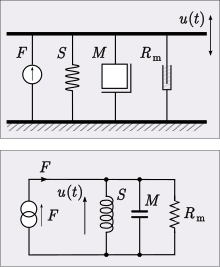Talk:Structural analog
| This article is rated Stub-class on Wikipedia's content assessment scale. It is of interest to the following WikiProjects: | |||||||||||
| |||||||||||
| The contents of the Neurotransmitter analogue page were merged into Structural analog on 30 January 2021. For the contribution history and old versions of the redirected page, please see its history; for the discussion at that location, see its talk page. |
Examples
[edit]The examples listed at the bottom of the page don't say what they are analogues for, or whether they are analogues for one another. The pages linked for methanol and silanol don't use the word analog at all (although the page for silane does mention that silanol is analogous to alcohols). If I'm intuiting correctly, the only thing that really needs to be done is a line break between the alcohols and amphetamines, making it clear that the page is saying silanol is an analog for methanol, and the three amines are analogs. — Preceding unsigned comment added by 65.60.215.235 (talk) 04:27, 7 September 2016 (UTC)
- Thanks, it's fixed now. --ἀνυπόδητος (talk) 12:40, 7 September 2016 (UTC)
[Unititled]
[edit]I added another use of the term. The definition I put down is actually the way I've heard it used most frequently. Maybe my definition should be the main definition. Maybe not though, I'm not too sure. If any of you also think so then feel free to edit it. I'm just going to leave it as it is myself though. Jamesters 18:03, 16 November 2006 (UTC)
Add other uses
[edit]Bellow a Omnipaedista's deleted text that I will put back... Please, comment/discuss here before and NOT DELETE after. The correct Wikipedia's procedure is to show here, at talk page, what is wrong... Chemistry not have the monopoly of the term "Structural analog". --Krauss (talk) 11:17, 5 March 2015 (UTC)
Structural analogs (structural analogue or simply analog) are models or representations that keep each other certain "structural similarity". When the structures in question are formally represented by graphs, the concep of analog is related to a graph isomorphism.
Systems engineering
[edit]
Analogical models are used in a method of representing a ‘target system’ by another, more understandable or analysable system.
Two systems have analog structures (see illustration) if they are isomorphic graphs and have equivalent (mapped) lumped elements.
Chemistry
[edit]In chemistry, a structural analog, also known as chemical analog or simply analog, is a compound having a structure similar to that of another one, but differing from (...)
(...)

